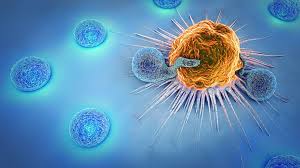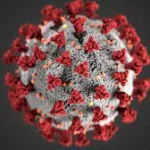Two groundbreaking studies have marked a significant advancement in the development of molecular therapies aimed at disrupting the uncontrollable growth of cancer cells at their core. These findings, published in Nature, originate from a research team at Harvard’s Department of Chemistry and Chemical Biology (CCB) and reveal how both small molecules and genetic mutations influence critical protein interactions within cancer cells.
Unlocking the Power of Molecular Glues
The research explores the potential of “molecular glues”—small molecules that facilitate the binding of proteins that would not naturally interact, leading to the targeted degradation of disease-causing proteins. Historically, these interactions were difficult to detect and utilize due to their complexity. However, the Harvard-led team has unveiled a novel scaffold and mechanism to design molecular glues that can modulate specific protein interactions and functions, potentially paving the way for new cancer treatments.
“Our research has centered on understanding how specific mutations in medulloblastoma, a pediatric brain cancer, mimic the action of molecular glues to drive oncogenic processes,” said senior author Brian Liau, an associate professor of chemistry and chemical biology. “Through our studies, we have detailed how genetic mutations and chemical modalities can converge to alter protein interactions.”
Disrupting Cancer-Causing Protein Interactions
One of the studies focused on how molecular glues influence essential protein interaction networks. The researchers found that UM171, a molecular glue, disrupts the CoREST complex—an essential organizing system that regulates gene access. This molecule binds to a protein known as histone deacetylase (HDAC) and links it with KBTBD4, a protein that plays a role in protein degradation. By forcing these proteins together, UM171 initiates the breakdown of the CoREST complex, a protein system previously considered “undruggable.”
“How this small molecule works was a big question in the field because no one knew for certain that it was a molecular glue,” said study co-author Olivia Zhang. “By combining functional genomics with structural biology, we gained new insights into its mechanism.”
Genetic Mutations Mimicking Molecular Glue Activity
The companion study examined how cancer-causing mutations in KBTBD4 alter normal protein interactions, leading to aberrant degradation of the CoREST complex. The researchers employed cryo-electron microscopy (cryo-EM) to visualize these mutations at an atomic level, revealing that the effects of certain genetic mutations closely resemble those induced by UM171. This discovery underscores a new paradigm in cancer research—where chemical and genetic mechanisms can functionally and structurally mimic each other.
“These insertion mutations occur in a flexible protein region, making it difficult to predict their impact,” said Megan Yeo, another co-author. “The cryo-EM structure was crucial in helping us understand how they drive cancer.”
A New Era in Drug Discovery
The research highlights a groundbreaking approach: leveraging genetic insights to guide the discovery of molecular glues. By identifying genetic mutations that create new protein interactions, scientists can develop targeted therapies for a variety of diseases beyond cancer.
“Finding molecular glue molecules is challenging,” Liau noted. “However, if we can use genetics to identify promising targets, it will revolutionize our ability to develop new drugs. This chemical-genetic convergence is an exciting new direction.”
Looking ahead, Liau’s team plans to further investigate the interplay between genetic mutations and small molecules, searching for additional pathways where this strategy could be applied. The findings could have far-reaching implications, potentially transforming the landscape of drug discovery and disease treatment.
Disclaimer:
This article is for informational purposes only and does not constitute medical advice. Readers should consult healthcare professionals before considering any medical treatment or intervention.











